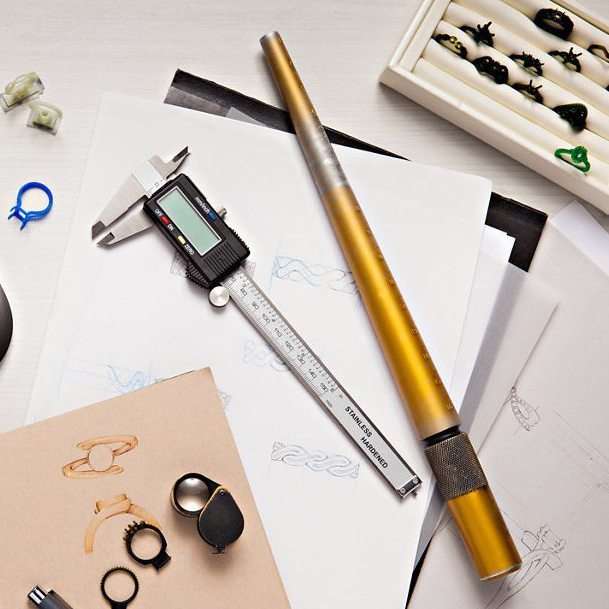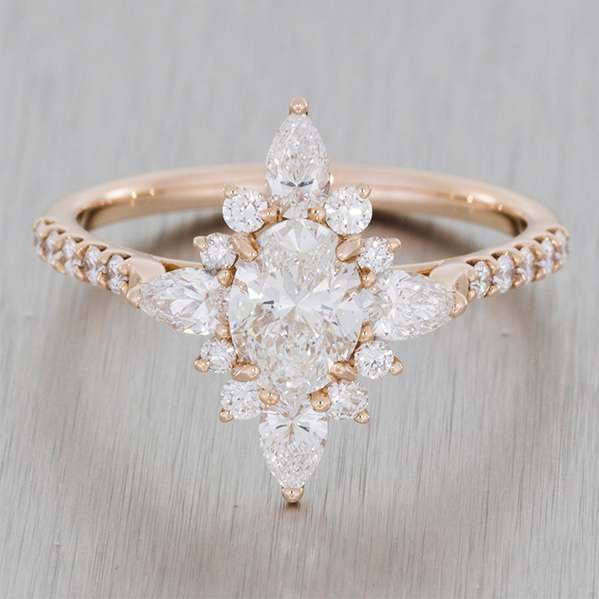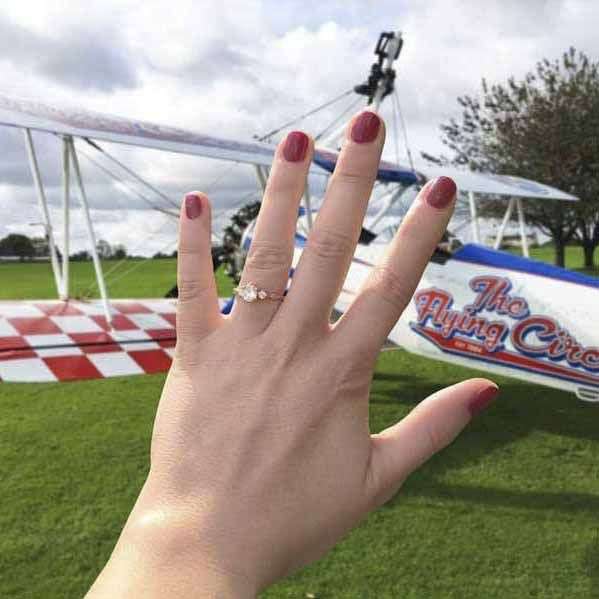What is ‘Cut’?
The G.I.A, in 2006, as a by-product of a manufacturing opportunity introduced the fourth C to the lexicon of Diamond Grading: ‘Cut’. They define ‘cut’ as ‘cut grade’ which is the way a diamond has been cut to maximize the way a diamond’s facets interact with light, creating the archetypal ‘sparkle’ associated with a diamond. This is then further enhanced by the way in which the stone’s proportions and symmetry are integrated into the stones cut and polish. If a diamond exhibits a poor cut grade, it will ‘leak’ light creating a dull, dim appearance.
The first decision to make when choosing a diamond is what shape and style of cut you prefer. When we talk about shape this just refers to the outline shape of the stone, this is actually nothing to do with the ‘cut grade’. The cutting styles are divided into two main groups- Brilliant cut, this is where the stone has a kite or triangular shaped facets radiating from a central point. Examples of this would be the standard round brilliant, oval, pear, marquise, princess, cushion and radiant cuts. The other style is step cut, this means the facets are cut into rectangular shapes parallel to the girdle on the crown and pavilion. Examples of this are emerald, asscher and baguette cuts. You can also get mixed cuts which could have a brilliant cut crown and step cut pavilion or vice versa.
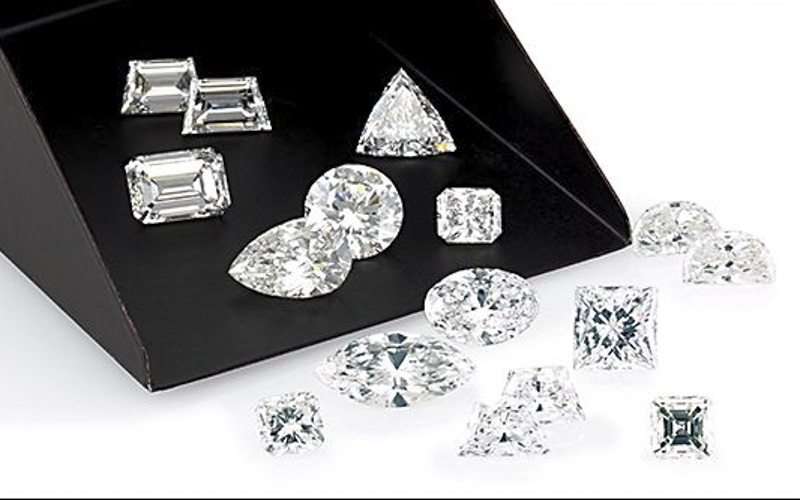
A round brilliant diamond always has either 57 or 58 facets depending on if the culet has been faceted or is left as a point. The large flat area on the top of the diamond is called the Table, you also have the crown which is the top angled section, this is then split from the lower half of the diamond called the girdle. The lower half of the diamond is called the pavilion. The relationships between the table, crown angle and pavilion angle are the points which give us light performance. See more about the Anatomy of a diamond here.
When we look at the ‘cut grade’ this only refers to round brilliant diamonds. The first factors you look at to assess the cut grade are Brightness (or Brilliance), Fire and Scintillation. These three factors create what you would collectively call Sparkle and without them, a diamond looks dull and lifeless. You only get these attributes from the way a diamond is cut and how well the proportions and angles work together.
To explain further, Brightness refers to the combination of the white light reflected from the surface and inside surfaces of the diamond. Fire refers to the dispersion of white light into the spectral colours, this is why you would see colours of the rainbow reflected back to you. Scintillation refers to the pattern of light and dark areas you see when the diamond, the light or the observer moves.
The specific cut proportions and angles play a dramatic part in how the light performs when it strikes a diamond. When light strikes a diamond it either reflects off the surface; if it reflects back the viewer would see it as a flash of white light which would be part of the brilliance of the diamond. If the light enters the diamond it slows down and could change direction which means it is refracted. The light ray could then strike an interior surface and either continue being reflected off the inside surfaces and back or it will exit the diamond straight away. If the light reflects throughout the diamond and back up some of it could disperse into the spectral colours (fire) and others will reflect as white light. The way these factors work with each other and ‘sparkle’ when the diamond, light source or viewer moves is the scintillation and overall brilliance of the diamond. The measure of the speed at which the light enters the diamond and bends is called the refractive index.
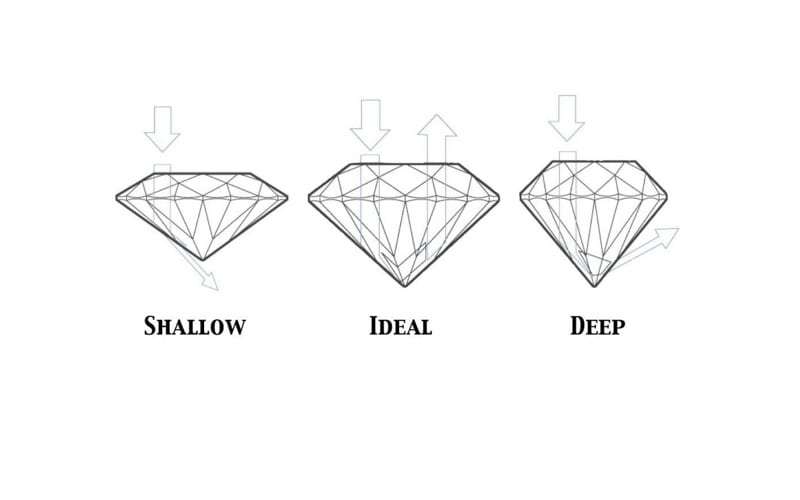
Why Is Cut Grade Important?
We at Durham Rose, are continually challenging what is considered the ‘best’ cut for each individual stone and client, which is why we are now exclusively providing our clients with Crafted by Infinity diamonds. They specialise in the highest possible precision cut diamonds that surpass the G.I.A ’s broad scope of ‘excellent’.
Diamond values, in today’s climate, are heavily based on the traditional 4 C’s with significant emphasis being weighted upon carat weight and colour. However, with the advancing knowledge surrounding cut-awareness and grading, the future value of a diamond will evolve to become based on new cut-criteria, which we at Durham Rose firmly believe should have far more prominence in the equation.
Marcel Tolkowsky, aptly nicknamed the ‘Father of Modern Cut Research’, studied an advanced engineering degree, alongside this he wrote a book in 1919 where he had produced a mathematical study of the way light performed within round brilliant diamonds. He discovered that the table size, crown angle and pavilion angle were the most important factors in producing the best ‘fire and brilliance’. Since his findings, scientists have been able to use modern technology to create 3D models of a diamond and by testing multiple combinations of table size and angles have narrowed it down to create the ‘Ideal’ proportions to maximise brightness, fire and scintillation.
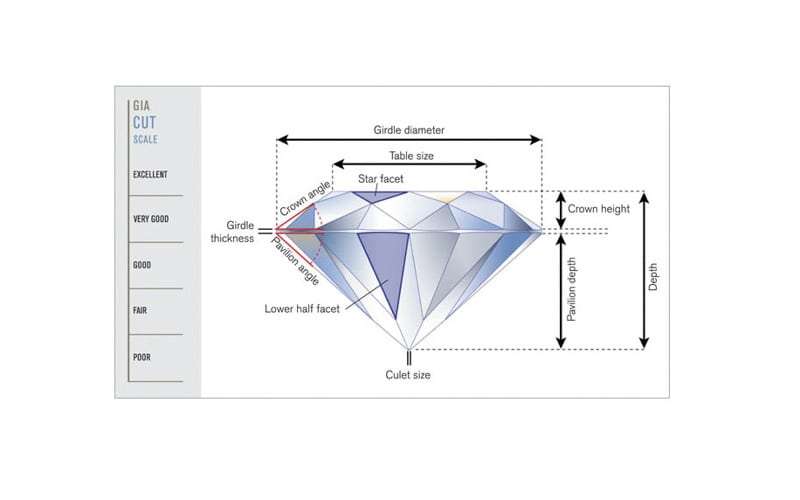
Cut Grade should be such an important focus of discussion between clients and their jewellers, that we actively encourage our prospective clients to speak with our knowledgeable and experienced diamond consultants.
We feel that after speaking to a professional about this topic, as well as the other ‘C’s’, you will come away with a far less conflicted opinion and feel confident in your diamond decision.
While it is important to consider many components when assessing the cut grade appearance and quality of a diamond, your personal preference plays the most important role.
More Like This
Discover how our rings are more bespoke, use higher spec diamonds... but for a lower price
Independently rated 9.8/10 - read how we've made that special moment just that little bit extra special.
Get in touch with one of our incredible ring designers
Our team and their wealth of experience will seamlessly guide you through the design process and create a unique, one off timeless piece of jewellery.

Get in touch with one of our incredible ring designers
We've trodden the path hundreds of times before so whether you have a clear idea about your requirements or are just looking for more information, let us guide you seamlessly through the journey by getting in touch today.





